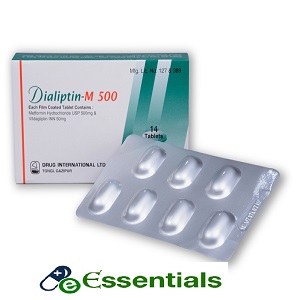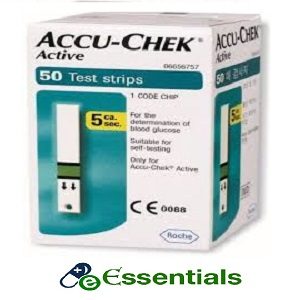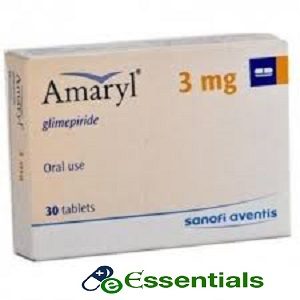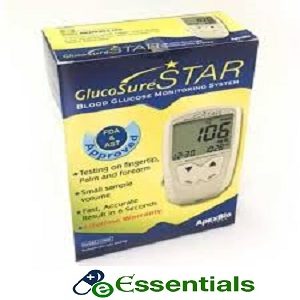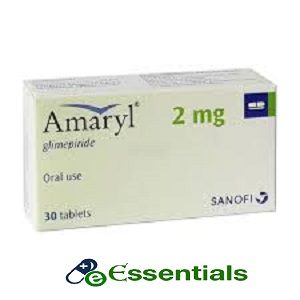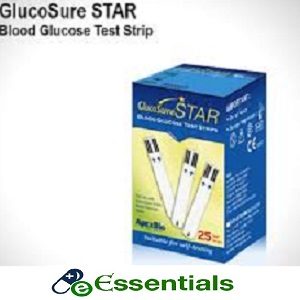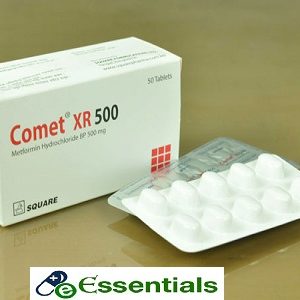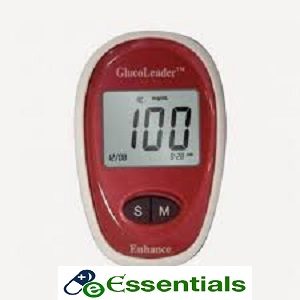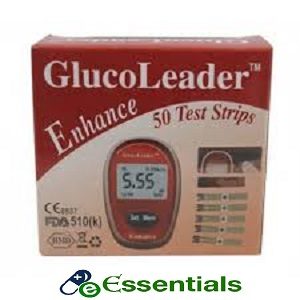Dialiptin-M 500mg 1 pcs
৳ 16.43
Brand : Dialiptin M 500mg
Manufacturer : Drug International Limited.
Indications
This is indicated as an adjunct to diet and exercises to improve glycaemic control in patients with type 2 diabetes mellitus whose diabetes is not adequately controlled on Metformin Hydrochloride or Vildagliptin alone or who are already treated with the combination of Vildagliptin and Metformin Hydrochloride, as separate tablets.
Therapeutic Class
Pharmacology
Vildagliptin is a dipeptidyl peptidase-4 (DPP-4) inhibitor, which is believed to exert its actions in patients with type 2 diabetes by slowing the inactivation of incretin hormones. Incretin hormones, including glucagon-like peptide-1 (GLP-1) and glucose-dependent insulinotropic polypeptide (GIP), are released by the intestine throughout the day, and levels are increased in response to a meal. These hormones are rapidly inactivated by the enzyme, DPP-4. The incretins are part of an endogenous system involved in the physiologic regulation of glucose homeostasis. When blood glucose concentrations are normal or elevated, GLP-1 and GIP increase insulin synthesis and release from pancreatic beta cells by intracellular signaling pathways involving cyclic AMP. GLP-1 also lowers glucagon secretion from pancreatic alpha cells, leading to reduced hepatic glucose production. By increasing and prolonging active incretin levels, Vildagliptin increases insulin release and decreases glucagon levels in the circulation in a glucose-dependent manner.
Metformin: The pharmacologic mechanism of action of Metformin is different from other classes of oral antihyperglycemic agents. Metformin decreases hepatic glucose production, decreases intestinal absorption of glucose, and increases peripheral glucose uptake and utilization.
Dosage & Administration
Adults: Based on the patient’s current dose of Metformin, Vildagliptin and Metformin may be initiated at either 50 mg/500 mg or 50 mg/850 mg twice daily, 1 tablet in the morning and the other in the evening. Patients receiving Vildagliptin and Metformin from separate tablets may be switched to Vildagliptin and Metformin containing the same doses of each component. Doses higher than 100 mg of vildagliptin are not recommended. There is no clinical experience of Vildagliptin and Metformin in triple combination with other antidiabetic agents. Taking Vildagliptin and Metformin with or just after food may reduce gastrointestinal symptoms associated with Metformin.
Interaction
Contraindications
Vildagliptin & Metformin is contraindicated in patients with:
- Hypersensitivity to the active substance or to any of the excipients
- Patients with Renal Impairment: Creatinine clearance
- Patients with acute or chronic metabolic acidosis, including diabetic ketoacidosis, with or without coma.
- Diabetic ketoacidosis should be treated with insulin
- Patients with type 1 diabetes
Side Effects
Pregnancy & Lactation
PREGNANCY: There are no adequate data on the use of Vildagliptin & Metformin in pregnant women; hence the potential risk for human is unknown.
NURSING MOTHERS: It is not known whether Vildagliptin is excreted in human milk. Due to lack of human data, Vildagliptin & Metformin should not be used during lactation.
Precautions
Use in Special Population
PEDIATRIC USE: Combination of Vildagliptin & Metformin is not recommended in patients 18 years of age.
GERIATRIC USE: Their renal function monitored regularly. Combination of Vildagliptin & Metformin has not been studied in patients >75 years. Therefore, the use of Combination of Vildagliptin & Metformin is not recommended in this
population.
Patients with renal impairment: This combination should not be used in patients with renal failure or renal dysfunction, e.g. serum creatinine levels > 1.5 mg/dL (>135 micro mol/L) in males and > 1.4 mg/dL (>110 micro mol/L) in females.
Patients with hepatic impairment: This combination is not recommended in patients with hepatic impairment including patients with a pre-treatment ALT or AST >3 X the upper limit of normal.
Brand
Drug International Limited

Related products
Blood Glucose Monitors
Blood Glucose Monitors



